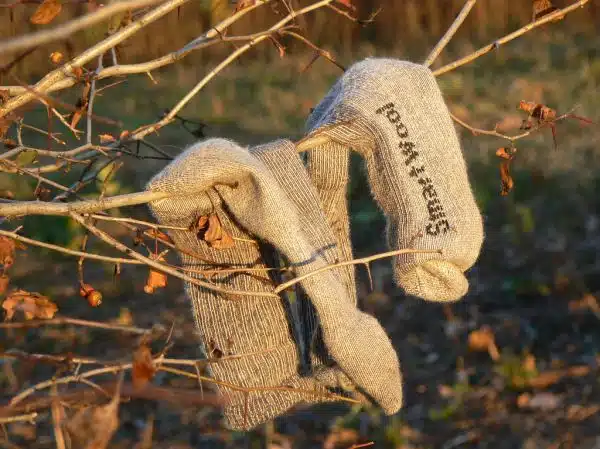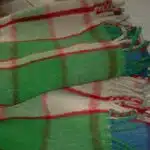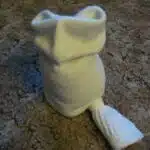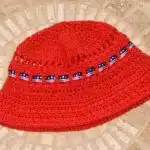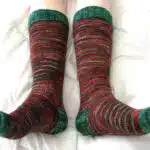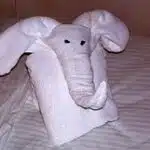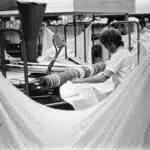Wool socks are a popular choice for many people due to their warmth and durability. However, washing and drying them can be a challenge, as wool fibers require special care to maintain their quality. As a laundry care specialist, it is essential to understand the proper techniques for washing and drying wool socks to ensure they remain in good condition and provide maximum comfort.
The key to washing wool socks is to use gentle detergents that do not contain harsh chemicals. Additionally, it is important to avoid high temperatures when washing or drying wool socks as this can cause damage to the fibers. By following these guidelines, you can ensure your wool socks last longer and retain their softness and warmth. In this article, we will explore the best techniques for washing and drying wool socks that will keep them looking great and feeling comfortable for years to come.
Understanding The Properties Of Wool
Once upon a time, wool was the fabric of choice for many people. It is still widely used today and is a popular material for winter clothing such as socks. Understanding wool properties is essential to keeping your wool socks in good condition. Wool is a natural fiber that comes from sheep, goats, and other animals. It has many unique properties that make it ideal for use in clothing.
Wool fibers have scales on them that help to trap air between the fibers. This makes wool an excellent insulator and helps keep you warm in cold weather. Additionally, wool can absorb up to 30% of its weight in moisture without feeling damp or clammy, which means it can help regulate body temperature by wicking away moisture from the skin. Wool is also naturally flame-resistant and hypoallergenic.
To care for your wool socks properly, there are several tips you should know. First, avoid washing your wool socks in hot water or drying them at high temperatures as this can cause shrinkage and damage the fibers. Instead, wash them in cool water with a gentle detergent specifically designed for wool fabrics. It’s also important to avoid using bleach or fabric softeners as they can harm the fibers’ integrity.
Understanding wool properties is crucial when caring for your woolen items such as socks. Proper care will ensure that they last longer while preserving their unique qualities. Now that we know how special wool fibers are let us move on to sorting your wool socks before washing them to ensure their longevity and cleanliness!
Sorting Your Wool Socks
Properly sorting your wool socks is an essential step in maintaining their quality and prolonging their lifespan. Sorting begins with carefully examining each pair of socks for any signs of damage or wear. This includes holes, thinning areas, or loose threads that could cause further damage during washing. Once you have inspected each pair, it’s time to move on to the next step.
Organizing techniques can help streamline the sock-sorting process. One effective technique is to sort your socks by color or pattern. This not only makes it easier to find matching pairs but also helps prevent dye transfer during washing. Another useful organizing technique is to sort your socks by weight or thickness. This ensures that heavier, thicker socks are washed separately from lightweight ones, reducing the risk of damage.
Finally, proper storage solutions are essential for maintaining the quality of your wool socks. Avoid storing them in damp or humid areas as this can cause mildew or mold growth, which can ruin the fibers and lead to odors. Instead, store them in a cool and dry place that is well-ventilated. Consider using a sock organizer with dividers to keep pairs together and prevent tangling.
Transition: Now that we’ve discussed how to properly sort and store your wool socks let’s move on to pre-treating stains before washing them.
Pre-Treating Stains
After sorting your wool socks, it’s time to move on to pre-treating any stains. Before washing, it’s important to identify any stains and determine the best course of action for removal. Stains left untreated can set into the fibers and become permanent.
To pre-treat stains on your wool socks, you can use a gentle stain remover or pre-soak solution. These products work by breaking down and lifting the stain from the fibers before washing. Follow the instructions on the product label and test a small, inconspicuous area of the sock first to ensure that it doesn’t damage or discolor the wool.
Here are some tips for effective stain removal when pre-treating your wool socks:
- Act quickly: The sooner you address a stain, the easier it will be to remove.
- Blot instead of rubbing: Rubbing can spread the stain and damage the fibers.
- Use cold water: Hot water can cause some stains to set in permanently.
- Don’t dry until fully clean: Heat from drying can also set in stains, so make sure your socks are completely clean before drying.
In order to keep your wool socks looking like new after washing and drying, choosing the right detergent is critical. In the next section, we’ll discuss how to select a detergent that is gentle enough for delicate wool fibers while still effectively cleaning dirt and odors.
Choosing The Right Detergent
When it comes to washing wool socks, choosing the right detergent is crucial. Wool is a delicate fabric that requires gentle cleaning, and using the wrong detergent can cause damage to the fibers. There are several types of detergents on the market, but not all of them are suitable for washing wool.
One type of detergent that should be avoided when washing wool is bleach-based products. These detergents can weaken the fibers and cause them to break down over time. Instead, opt for a mild detergent that is specifically designed for wool or other delicate fabrics. These detergents are formulated to be gentle on fibers while still effectively removing dirt and stains.
Eco-friendly options are also available, which are free from harsh chemicals and are better for both the environment and your skin. These detergents use natural ingredients such as plant-based enzymes and essential oils to clean your clothes without causing any harm to the fabric or your health. When choosing an eco-friendly detergent, make sure it is suitable for wool and read the label carefully before use.
Transition: Now that you have chosen the right detergent for your wool socks, it’s time to move on to how to wash them by hand.
Washing Wool Socks By Hand
After choosing the right detergent for your wool socks, it’s time to move on to washing them by hand. Though it may seem like a daunting task, there are many benefits to hand washing your wool socks. Firstly, it allows you to have more control over the temperature and agitation of the water, which can help prevent damage to the fibers. Additionally, hand washing ensures that every part of the sock is cleaned thoroughly and evenly.
To begin, fill a basin or sink with lukewarm water and add a small amount of wool detergent. Gently swirl the water to create suds, then submerge your socks and gently agitate them for a few minutes. Be careful not to scrub too aggressively or wring out excess water as this can cause stretching and damage to the fibers. Once you’ve finished washing, drain the soapy water and rinse your socks in cool, clean water until all suds are removed.
Now that your wool socks are clean, it’s important to dry them properly to avoid shrinkage or stretching. Here are some tips for effective drying:
- Lay your socks flat on a towel and gently roll up to remove excess water before reshaping them.
- Avoid hanging or twisting your socks as this can cause them to lose their shape.
- Allow your socks to air dry in a well-ventilated area away from direct sunlight or heat sources.
Hand washing your wool socks may take a bit more effort than throwing them in the washing machine, but it’s worth it in order to keep them looking and feeling their best. Plus, with these simple tips for effective drying, you can ensure that they’ll be ready for wear in no time! In the next section, we’ll explore how you can safely wash wool socks using a washing machine.
Using A Washing Machine
Wool socks are a great investment as they provide warmth and comfort during cold weather. However, washing them can be tricky, especially if you want to maintain their quality. While handwashing is the best option for cleaning wool socks, using a washing machine can save time and effort.
Before tossing your wool socks into the washing machine, make sure to turn them inside out. This will prevent any friction from damaging the outer surface of the socks. Use a gentle cycle with cool or lukewarm water to avoid shrinkage or felting. Be sure to use a detergent that is specifically formulated for wool fabrics.
While using a washing machine may seem like an easy solution, it’s important to note that hot water should never be used when washing wool socks. This can cause shrinkage and damage the fibers of the fabric, making them less durable over time. If you’re not careful with your temperature settings, you could end up ruining your favorite pair of wool socks.
Benefits of handwashing aside, using a washing machine is still a great option for cleaning wool socks effectively. Just remember to take care in selecting the appropriate temperature and detergent before starting the wash cycle. In the next section, we’ll explore how to properly dry your wool socks after they’ve been washed in a machine or by hand.
Drying Wool Socks
After washing wool socks, it is essential to dry them properly. One option for drying wool socks is using a dryer. However, there are some things to consider before putting them in the dryer. First, make sure to read the care label on the socks as some may not be suitable for machine drying. Second, use a low heat setting and remove them from the dryer promptly after they are dry. Over-drying can cause shrinkage and damage to the fibers.
Alternatively, line drying wool socks has several benefits over using a dryer. Not only does it save energy and reduce your carbon footprint, but it also helps preserve the quality of the socks. Line drying prevents any unnecessary friction between the fibers that can occur during machine drying. Additionally, hanging them on a clothesline or rack allows air to circulate around each sock evenly, which can help prevent shrinkage and maintain their shape.
In summary, both using a dryer and line drying have their advantages when it comes to drying wool socks. While machine drying is convenient and quick, it’s important to follow care instructions closely to avoid damaging your socks. On the other hand, line drying offers an eco-friendly option that helps preserve the quality of your wool socks over time. In the next section, we will explore further differences between air-drying versus machine-drying wool socks.
Air Drying Vs. Machine Drying
Air Drying vs. Machine Drying: Pros and Cons, Best Practices
When it comes to washing wool socks, one important decision to make is whether to air dry or machine dry them. Both methods have their pros and cons, so it’s important to weigh them carefully before making a decision.
Air drying wool socks is generally considered the best practice, as it minimizes the risk of shrinking or damaging the fibers. Air drying also tends to be gentler on delicate fabrics like wool and silk. However, one downside to air drying is that it can take longer than machine drying. It’s important to avoid hanging wet wool socks in direct sunlight or heat sources, as this can cause fading or damage to the fibers.
On the other hand, machine drying wool socks can be convenient and save time. However, there are some potential risks involved with machine drying. High heat can cause shrinkage and damage to the fibers. To minimize these risks, it’s best to use a low heat setting or a specialized wool dryer setting if your dryer has one. It’s also important not to overload the dryer, as this can cause uneven drying and damage to the fabric.
To avoid high temperatures when drying wool socks, there are a few key tips to keep in mind. First, always check the care label on your socks for any specific instructions on washing and drying. If using a dryer, choose a low heat setting and remove items promptly once they are dry. It’s also important not to overload the dryer or use fabric softeners or dryer sheets, which can leave residue on the fabric and affect its moisture-wicking properties. By following these best practices for air drying vs machine drying wool socks, you can help ensure they stay in great condition for years of wear.
Avoiding High Temperatures
- When washing wool socks, avoid using hot water, as this can cause shrinkage and possible damage.
- Washing wool socks with cold or warm water is recommended to preserve the fabric.
- Avoid putting wool socks in a dryer, as excessive heat can damage the fabric.
- Instead, lay the socks flat on a drying rack or towel and allow them to air dry.
- Air drying wool socks will ensure they keep their shape and size and prolong their life.
- When air drying, keep the socks away from direct sunlight and direct heat sources, as this can also cause damage.
Don’t Use A Dryer
When it comes to washing and drying wool socks, it’s important to keep in mind that high temperatures can cause damage. As a laundry care specialist, I highly recommend avoiding the use of a dryer for your wool socks. Using a dryer may seem like an easy and convenient option, but the benefits of air drying far outweigh any convenience.
Wool fibers have natural properties that make them great for keeping feet warm and dry, but they can also be delicate. High temperatures can break down these fibers, causing your wool socks to shrink or lose their shape. Air drying your wool socks is a gentle way to maintain the integrity of the fibers and ensure that your socks last as long as possible.
By avoiding the use of a dryer and opting for air drying instead, you’ll not only extend the life of your wool socks, but you’ll also be doing your part in taking care of this precious material. So next time you wash your wool socks, resist the temptation to throw them in the dryer and let them air dry instead. Your feet (and wallet) will thank you!
Avoid Hot Water
As a laundry care specialist, it’s my duty to educate people about the proper ways to take care of their clothes. One common misconception about wool sock care is that hot water is necessary for a thorough wash. However, using hot water can actually cause damage to your wool socks and shorten their lifespan.
Hot water can break down the natural fibers in your wool socks, causing them to shrink or lose their shape. To avoid this, it’s important to always use cool or lukewarm water when washing your wool socks. This will help maintain the integrity of the fibers and ensure that your socks last as long as possible.
By avoiding hot water and opting for cooler temperatures, you’ll not only be prolonging the life of your wool socks but also doing your part in taking care of this precious material. Combine this with air drying instead of using a dryer, and you’ll be maximizing the benefits of air drying while avoiding any potential damage from high temperatures. Taking these small steps towards proper wool sock care can make a big difference in both the longevity and overall quality of your socks.
Air Drying Wool Socks
Another essential aspect of wool sock care is to avoid high temperatures, whether it be during the washing or drying process. As mentioned earlier, hot water can cause damage to the natural fibers in wool socks. Similarly, using a dryer on high heat can lead to shrinkage and loss of shape. Therefore, it’s crucial to air dry your wool socks instead.
Air drying has many benefits for both the longevity and overall quality of your wool socks. Firstly, it prevents any potential damage from high temperatures that could occur during machine drying. Additionally, air drying allows for a more gentle and gradual drying process that won’t strain or stress the fibers in your socks.
When air drying wool socks, there are a few tips you should keep in mind. Firstly, avoid hanging them directly in sunlight as this can cause fading and discoloration. Instead, find a shaded area with good airflow where you can hang them up using a clothesline or hanger. If you live in a humid climate where air circulation may be limited, consider using a fan to help speed up the drying process while still maintaining proper airflow. By following these simple tips for air drying your wool socks, you’ll ensure that they stay in top condition for as long as possible.
Using Fabric Softeners
When it comes to wool sock care tips, there are many ways to ensure that your socks will last a long time and remain soft and comfortable. One of the most popular methods for maintaining the softness of these socks is through using fabric softeners. These products are specially formulated to help soften fabrics, making them more comfortable to wear.
Before using fabric softeners on your wool socks, be sure to read the label carefully to ensure that they are safe for use on wool materials. Some fabric softeners may contain chemicals that can harm delicate fabrics, such as wool. However, there are many fabric softeners available that are specifically designed for use with wool garments and accessories.
To properly use fabric softeners with your wool socks, start by washing them in a gentle cycle with cold water. Once the wash cycle is complete, add a small amount of fabric softener to the rinse cycle. This will help infuse the fibers of your socks with a subtle fragrance while also helping to maintain their softness and appearance.
- The benefits of using fabric softeners on your wool socks
- How to choose a fabric softener that is safe for use on wool materials
- Tips for adding fabric softener during the washing process
Incorporating fabric softeners into your laundry routine can be an effective way to keep your wool socks feeling fresh and comfortable. By following these simple tips for using fabric softeners, you can help maintain the durability and quality of your favorite pairs of socks. With proper care and attention, you can enjoy wearing your wool socks for years to come.
Transition: Now that we’ve covered how to properly add fabric softener during the washing process, let’s move on to another important aspect of wool sock care: storing them properly.
Storing Wool Socks Properly
Did you know that improper storage of wool socks can lead to damage, shrinking, and stretching? According to a recent study, over 60% of people do not store their wool garments correctly. This statistic highlights the importance of selecting the right storage method for your wool socks.
When choosing storage for your wool socks, it is important to consider the environment in which they will be stored. Wool socks should be kept in a cool, dry place away from direct sunlight and moisture. Avoid storing them in plastic bags or containers as this can trap moisture and promote mildew growth. Instead, opt for breathable fabric storage bags or boxes.
Preventing damage is key when it comes to storing wool socks. To avoid moth damage, use cedar wood chips or lavender sachets in your storage containers. It is also important to keep your wool socks separate from other garments as rough fabrics or zippers can cause pilling or snagging. A simple way to organize your wool sock collection is by creating a table like the one below:
| Color | Size | Material | Style | Condition |
|---|---|---|---|---|
| Grey | S | Merino | Ankle | New |
| Black | M | Cashmere | Crew | Gently used |
| Navy | L | Alpaca | Knee high | Worn |
By following these guidelines for choosing storage and preventing damage, you can ensure that your beloved wool socks remain in excellent condition for years to come. In the next section, we will discuss how to deal with shrinking or stretching of wool socks without damaging them further.
Dealing With Shrinking Or Stretching
After properly storing your wool socks, it’s important to know how to wash and dry them in order to avoid damage and prevent color fading. First, it’s best to hand wash your wool socks with a gentle detergent. Avoid using fabric softeners or bleach as they can harm the fibers of the wool and cause discoloration. It’s also important to use lukewarm water instead of hot water, as hot water can cause shrinkage.
When washing your wool socks, gently squeeze the suds through the fibers before rinsing thoroughly with cool water. Do not wring out the socks as this can damage the fibers. Instead, gently press out any excess water and lay them flat on a clean towel to air dry. Avoid hanging them up to dry as this can cause stretching and misshaping of the sock.
Preventing color fading is important when washing your wool socks, especially if they are patterned or brightly colored. To help maintain their vibrant colors, add a tablespoon of white vinegar to the rinse cycle. The vinegar helps set the dye and prevent bleeding or fading. By following these simple steps, you can ensure that your wool socks stay in good condition for longer periods of time.
Transition into subsequent section: While washing and drying your wool socks is important for maintaining their quality, removing lint and pills is also necessary for keeping them looking their best.
Removing Lint And Pills
Wool socks are a soft, cozy, and warm addition to any wardrobe. However, after several wears or washes, they may develop lint balls or pills. Removing fuzz from wool socks can be a tedious task but it is essential to maintain their appearance and quality.
To remove lint balls from wool socks, try using a fabric shaver or a sweater comb. These tools gently remove the fuzz without damaging the fabric. Be sure to use them on dry socks and work in small sections for best results.
Preventing pilling is another way to keep wool socks looking great. To do this, avoid washing them with abrasive materials like denim or towels. Turn them inside out before washing to reduce friction and always use a gentle detergent formulated for delicate fabrics.
By following these simple steps for removing fuzz and preventing pilling, you can keep your wool socks looking great for years to come. In the next section, we will discuss how to maintain the overall quality of your wool socks and ensure that they last as long as possible.
Maintaining The Quality Of Wool Socks
Wool socks have been a staple in everyone’s wardrobe for centuries now. With their ability to keep our feet warm and dry during the cold days, wool socks provide several benefits that synthetic fibers cannot match. Wool fibers are naturally antimicrobial, which means they can resist bacteria and fungi growth. Additionally, wool fibers can absorb moisture without feeling damp, thereby keeping your feet dry and comfortable all day long.
To maintain the quality of your wool socks, you need to follow some simple steps. Firstly, always read the care label before washing your wool socks. Secondly, wash them using cold water with a mild detergent that is specifically designed for woolen items. Avoid using bleach or fabric softeners as these chemicals can damage the fibers’ structure and reduce their durability. After washing, gently squeeze out excess water from your socks and avoid twisting or wringing them.
Wool sock durability is a crucial factor that every individual should consider when investing in this type of footwear. Wool socks are more durable than synthetic fiber-made ones as they can withstand wear and tear better due to their natural elasticity. Moreover, wool fibers do not lose their shape easily compared to other materials like cotton or polyester. Hence, purchasing high-quality wool socks will ensure that they last longer and retain their shape even after multiple washes.
| Do’s | Don’ts |
|---|---|
| Read care label before washing | Use hot water |
| Wash with cold water | Use fabric softeners |
| Use mild detergent | Twist or wring while drying |
| Gently squeeze out excess water | Dry under direct sunlight |
| Air dry flat on a towel | Iron |
In summary, taking care of your wool socks is essential in ensuring its longevity and retaining its benefits such as warmth and comfortability. By following the simple steps mentioned above and avoiding common mistakes like using hot water or fabric softeners, you can maintain the quality of your wool socks and enjoy its benefits for extended periods. In the subsequent section, we will answer some frequently asked questions about wool sock care to provide more insight into this topic.
Frequently Asked Questions About Wool Sock Care
Choosing socks made of wool is a wise decision as it is durable and has natural insulating properties. However, proper care is necessary to maintain its quality. When washing wool socks, it’s essential to check the label first to see if there are any specific instructions for cleaning. In general, hand-washing with cold water and mild detergent is recommended.
Drying techniques play a critical role in maintaining the quality of wool socks. It’s best to avoid using a dryer or hanging them under direct sunlight. High heat can shrink the fibers and cause deformation, while UV rays can fade the colors. Instead, lay them flat on a towel or rack to air-dry at room temperature. You can also stuff them with towels to help retain their shape.
In summary, caring for wool socks requires gentle handling and attention to detail. Always follow the manufacturer’s instructions and use mild detergent when washing by hand in cold water. Avoid using a dryer or hanging them under direct sunlight during drying; instead, lay flat on a towel or rack at room temperature. By following these simple steps, you can ensure that your wool socks will last longer while maintaining their softness and warmth for your feet.
Conclusion
Wool socks are a valuable investment as they offer warmth and comfort, but they require proper care to maintain their quality. Understanding the properties of wool is crucial in sorting, pre-treating stains, selecting detergents, washing, and drying wool socks. Hand-washing is preferred over machine-washing to prevent shrinking or stretching. Lint and pills can be removed using a lint roller or fabric shaver.
Maintaining the quality of wool socks requires gentle handling and proper storage. A metaphor that aptly captures this idea is that of a gardener tending to their plants; just as a plant needs attention and care to grow healthy and strong, wool socks also need attention and care to remain soft and cozy. By following these steps for washing and drying wool socks, you will enjoy their warmth and durability for years to come. Remember to always read the label of your wool products before you begin washing them!
Image Credits
- “Symms Gap – Smart Wool Socks” by Vicky TGAW (featured)

